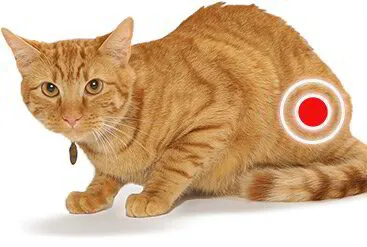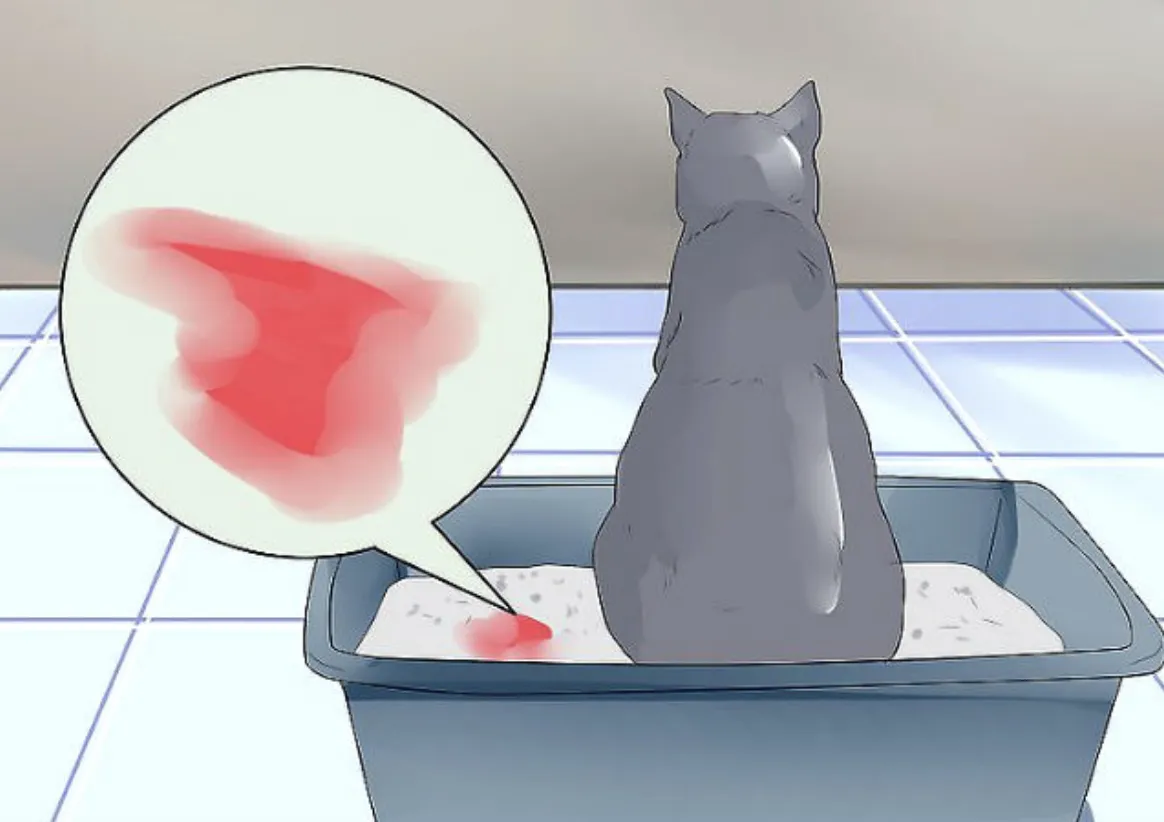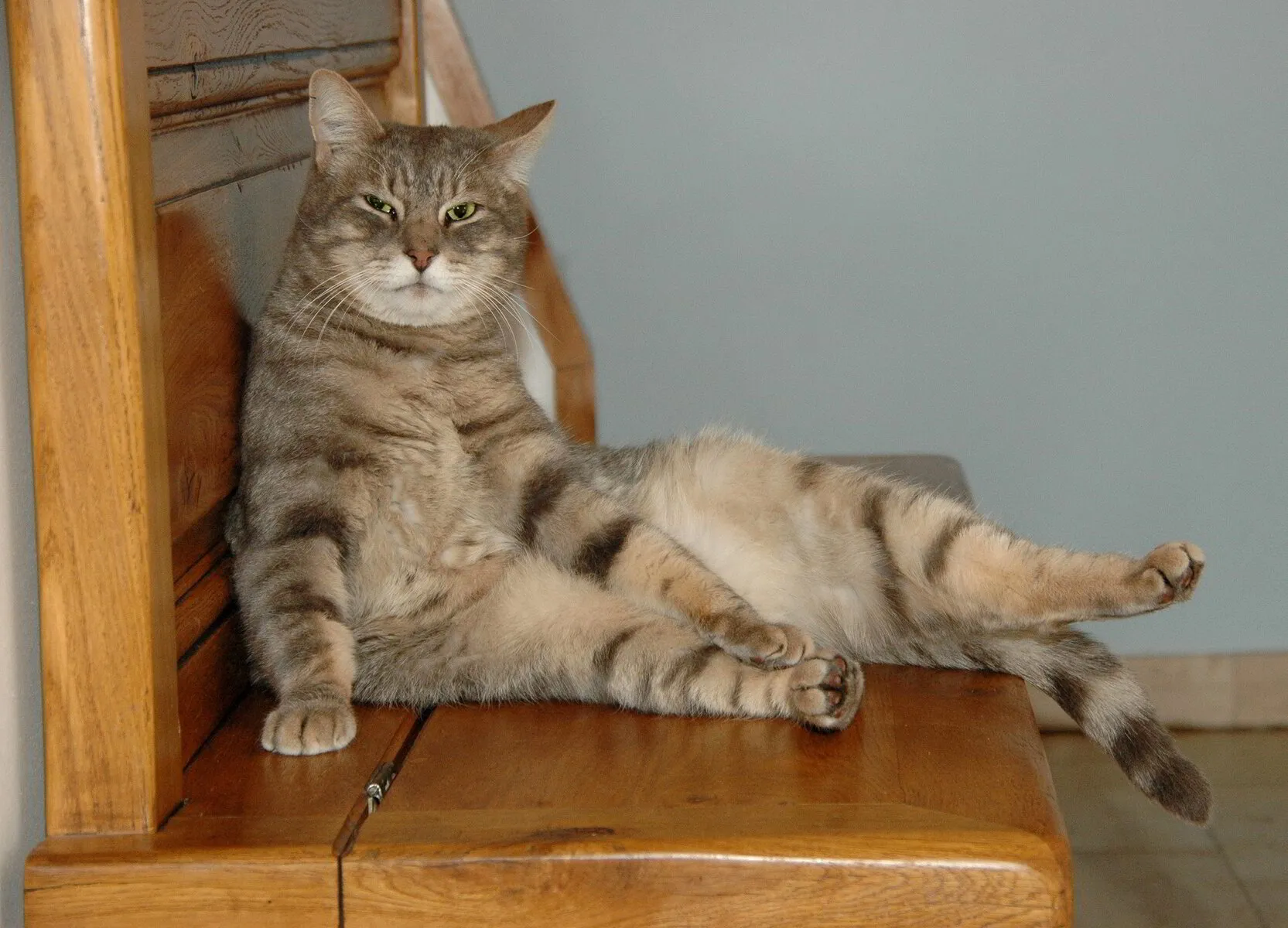Cystitis, or inflammation of the bladder, is one of the most common feline lower urinary tract diseases ( FLUTD ). Its danger is that the first signs of cystitis can be easily confused with behavioral disorders: the widespread belief that cats just “shit” if they don't like something in some sort of revenge, is far from reality. This is exactly what most would think when seeing small puddles appearing in different parts of an apartment.
Owners suffer from an increasingly heavy odor and negative emotions from the pet, while the cat itself suffers from constant pain in the bladder and an unsatisfied urge to urinate.
If we are talking about a cat, then the usual seems to be that cystitis is a danger to their life.
What is cystitis
Cystitis is an inflammation of the bladder. Most often, with this disease, other organs of the urinary system, such as the urethra, are also affected.
Cystitis in cats is a very common disease. It is accompanied by painful symptoms. The disease, once started, often recurs, so the owners of cats who have once been diagnosed with cystitis should be extremely careful and regularly monitor the condition of the pet.
It is extremely important to complete the treatment of each episode of cystitis, otherwise, the risk of recurrence will be higher.
Causes of cystitis
An inflamed bladder in cats can be for the following reasons:
- "Ascending" infection - the introduction of microorganisms characteristic of the large intestine, on the genitals when licking the perineum;
- "descending" infection - in the event of a kidney abscess or, more often, pyelonephritis microbes with urine enter the bladder and cause inflammation;
- urolithiasis, in which the walls of the bladder are injured by the sharp edges of the crystals - bladder stones;
- blunt abdominal trauma;
- stress;
- inadequate fluid intake;
- in rare cases - hypothermia.
Forms of cystitis
Calculous cystitis:
Appears if stones or sand are deposited in the bladder. They injure the bladder wall. With this form of the disease, crystals of various salts are usually found in the urine, and on this basis, the doctor can make a diagnosis. But sometimes, when the stones are large and dense, a urine test can be without serious deviations. In this case, other diagnostic methods come to the rescue - ultrasound and x-rays.
Hemorrhagic cystitis:
It develops when, for certain reasons, the mucous membrane of the urinary tract is damaged. The reason can be anything - sand, inflammation, stress ... But the main difference between this form of cystitis and others is a large amount of blood in the urine, sometimes noticeable to the naked eye. This form can be combined with any other.
Bacterial cystitis is:
The excessive excretion of bacteria in the urine. Normally, urine is sterile, bacteria should not be in it. They appear if the organ is inflamed. In animals, a small number of bacteria in the sample may be normal - if they got into the urine from wool. An experienced doctor can easily distinguish such "guests" from the disease, because with bacterial cystitis there will be a lot of microbes, and most importantly, there will be a large number of leukocytes, white blood cells in the urine, which the immune system sends to the focus of inflammation.
Feline idiopathic cystitis fic, or bladder neurosis:
The name "idiopathic" means that the cause of the disease has not been established. Recent studies have convincingly proven that cystitis, in which urinalysis is in principle normal, except that the content of leukocytes may be slightly increased, has a specific cause - stress. Cats with this condition may be shy or aggressive. But they can also behave quite normally. However, like people, some animals can hide emotions, or mask difficult experiences with increased affection and playfulness - everything that is perceived positively by the owners. Feline idiopathic cystitis ( fic ) is therefore extremely difficult both in diagnosis and treatment: not all owners believe the doctor that it is necessary to treat not only the bladder, but also the nervous system, and even more so, not everyone is ready for the fact that it is necessary to change the living conditions of the animal.
Symptoms of cystitis
In order to start treatment in time, you need to know how cystitis manifests itself. At the beginning of the disease, the symptoms of cystitis are not easy to notice, but it's at this stage of the disease that the treatment is quite simple. You can get by with medicines that are given by mouth at this early stage.
In the early stages of cystitis, the cat begins to urinate more than usual and occasionally ignores the litter box, making puddles in the wrong place. Already during this period, the smell of urine is most often changed, but slightly, and not all owners can notice this sign.
With the development of the disease, urination becomes more frequent, and puddles in the litter box are smaller. The smell of urine becomes more pungent. In some cases, you can notice a change in the color of urine, it becomes reddish or pinkish. The cat looks for more and more places to urinate in hopes that it's going to be less painful to urinate, for example, on soft surfaces.
In advanced stages, mucus clots may be seen in the urine. In cats, cystitis can lead to a complete cessation of urination or unproductive attempts, when the animal often visits the tray, but the litter remains dry.
Both cats with fic and cats with severe fic suffer the same way, but in cats, the situation is complicated by the fact that stopping the outflow of urine can lead to the death of the animal; this is an emergency situation that you need to contact the veterinarian immediately, at any time of the day.
Such manifestations are torment for a cat. A pet in an attempt to urinate will spend a long time on the toilet, which will resemble constipation. After visiting its toilet, the animal will walk on bent legs.
Diagnostics
Diagnosis of cystitis in cats consists of the following activities:
- history taking - whether the cat had frequent urination, episodes of urination outside the tray, what is the volume of urine separated at a time;
- palpation of the abdominal cavity - the wall of the inflamed bladder is usually thickened, edematous, loose, and this can be felt through the abdominal wall by an experienced veterinarian;
- clinical analysis of urine - helps to establish the form of cystitis, concomitant diseases and choose the right treatment;
- Ultrasound of the urinary system - clarifies the data of palpation and urinalysis, allows you to detect neoplasms of the bladder ( polyps are not uncommon ), most types of stones, assess the volume of mineral suspension;
- general clinical and biochemical blood tests - are necessary to assess the level of inflammation and the presence of kidney problems as a probable cause or consequence of cystitis.
As a rule, these methods are enough to make an accurate diagnosis. However, sometimes additional research is required:
- bladder x-ray - if stones are suspected, "invisible" for ultrasound ;
- bacteriological culture of urine - performed if antibiotic treatment does not help or frequent relapses of the disease occur, for this, urine is taken with a syringe directly from the bladder, under ultrasound control, sterile packed and sent to the laboratory, where they will try to sow microorganisms from the sample, if they are there have ;
- biopsy of the bladder mucosa - taking a piece of tissue to check for the appearance of atypical cells, is performed if an oncological process ( cancer or other tumor ) is suspected in the bladder.
Most often, according to the results of additional studies, the diagnosis can be established even in the most difficult cases.
Treatment of cystitis in a cats
When treating cystitis in cats, the veterinarian faces three challenges :
- Ensure the outflow of urine, which is especially important in cats to relieve the symptoms of the disease - pain, frequent urination;
- Eliminate inflammation of the bladder;
- Eliminate the cause of cystitis.
The list of drugs that are used for cystitis in cats is very wide, and specific regimens depend on the cause of the disease. But there are groups of drugs that are always prescribed.
Antispasmodics - drotaverine ( noshpa ) or papaverine . Their task is to facilitate urination and at least a little, but relieve discomfort in the bladder and urethra, and in cats - stop urethral spasm, which can lead to a cessation of urine outflow, and in this case, bladder catheterization will be required even if when there is no sand.
Antibacterial drugs - antibiotics or nitrofurans ( uroseptics ), whose task is to fight the growth of microflora in the urinary tract. They are used in the middle and late stages of the development of the disease, even if there are no bacteria and leukocytes in the urine: the inflamed mucosa is a favorable environment for the reproduction of microorganisms, and without the use of these drugs, the animal is more likely to develop inflammation.
Additional fluid administration - forced supplementation through the mouth or infusion of crystalloids ( saline solution, Ringer's solution, in the absence of appetite in the animal - Ringer - Locke solution or the addition of glucose in a dropper ), with cystitis, usually subcutaneous. This is necessary to activate the natural flushing of the bladder.
In severe cases, when the outflow of urine is disturbed, a urethral catheter is placed for 3-5 days.
The diagram may include
- vitamin preparations - in the absence of appetite or as metabolic correctors, if the animal has an alkaline urine reaction;
- diuretics ( usually herbal ) - to further enhance the natural processes of releasing the bladder from the effects of inflammation;
- herbal anti-inflammatory drugs;
- cat's diet - for urolithiasis, therapeutic and then preventive industrial feeds are used.
Prescribe with caution:
non-steroidal ( spazgan, baralgin ) and especially steroidal ( prednisolone, dexamethasone ) drugs - can provoke or increase bleeding ;
hemostatic - if prescribed, then for a very short time, since there is no special need for them with capillary bleeding, and side effects exceed the potential benefit;
all drugs, including antibacterials, that affect kidney function: until the results of a biochemical blood test are obtained, it is impossible to judge with certainty whether they will harm the patient.
Treatment aimed at eliminating the causes of the disease may be different and depends on this cause.
How to help yourself and your pet at home
Until urination is improved, lay disposable diapers in places chosen by animals, so you will save yourself from the need to constantly wash up puddles.
Make sure that there is always plenty of clean water in the bowl, change the fresh water at least once a day, and make sure to clean the bowl regularly.
Forced supplementation in volumes prescribed by a veterinarian is optimally combined with giving herbal decoctions or tablets.
If the cat has a blockage of the urethra and an overflow of the bladder, ask the doctor after catheterization to teach you how to massage the bladder, every owner can do this, but the procedure requires gentleness, accuracy and it is not always possible to apply it from the first days after the restoration of urination.
Prevention of cystitis
It is impossible to prevent cystitis in cats, it is only possible to detect abnormalities in the early stages.
This will save both yourself and the animal from unnecessary suffering. To understand that your cat is threatened with cystitis, you need to regularly and timely take a urine test. This is done annually since the pet is 1 year old.
After the first episode of cystitis during the treatment period, urine is taken as prescribed by a doctor. Usually, this is done at least 3-4 times during the acute period, then once every 3 months, then, if there are no deviations in the analyzes, once every six months.



